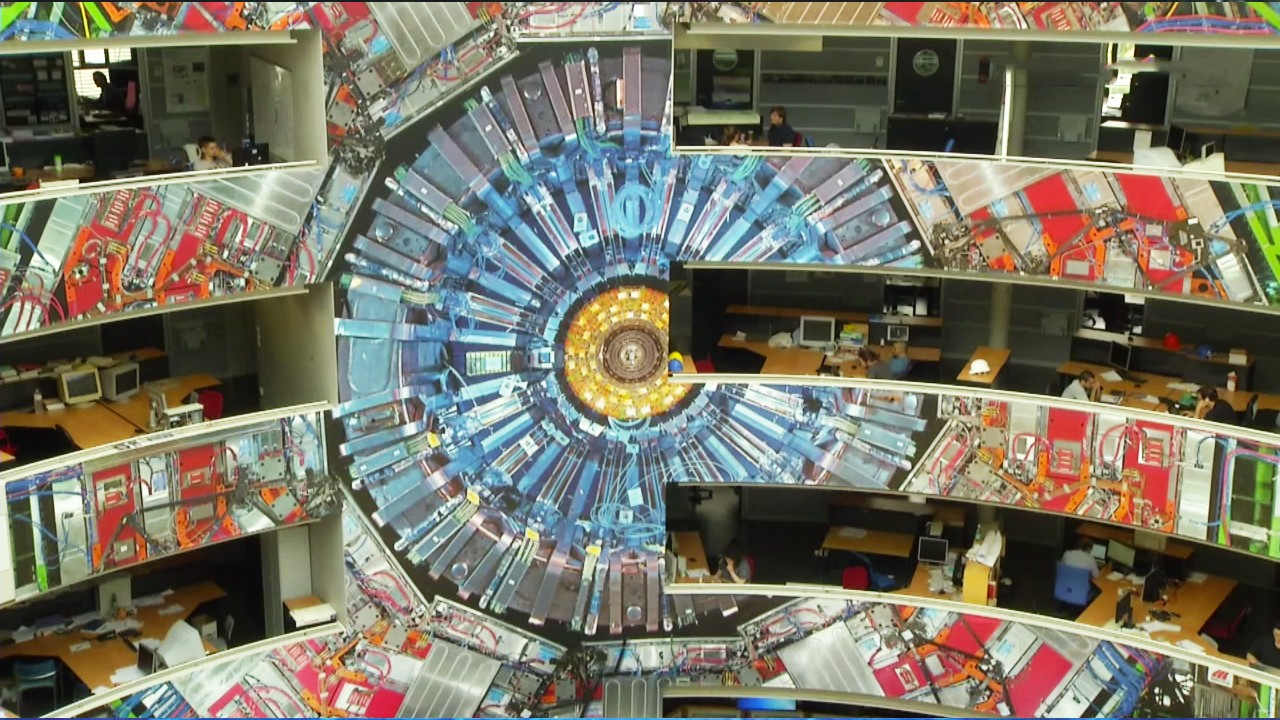In 2012, researchers at the Large Hadron Collider (LHC) in Switzerland famously found a particle that acted like the Higgs boson, an elusive and long-theorized particle that imbues mass to matter. Usha Mallik, a University of Iowa physicist, thinks that they might have caught an "impostor" masquerading as the Higgs, and that it's possible we still haven't found the real Higgs boson at all.In a new experiment, her team is pushing the LHC to an all-time high of 14 TeV (a unit of energy) from the previous record of 13 TeV, in order to seek out two "bottom quarks"—subatomic particles that should be left behind when a Higgs boson particle decays. It's thought that these bottom quarks are created about 60 percent of the time a Higgs boson vanishes, yet this particular pattern has never been observed before.
Advertisement
Usha Mallik. Image: Tim Schoon/University of Iowa
"The higher the energy, the closer we get to [modelling conditions at] the Big Bang," Mallik explained. This will also increase the number of collisions per second, giving them a better chance of finding those bottom quarks. To sort through all of the data and debris, Mallik and the four students in her group will build an extremely precise sub-detector at the LHC by 2023.A 17-mile underground loop at CERN, the LHC is home to many experiments, investigating everything from antimatter to the hottest man-made temperatures. Named after physicist Peter Higgs, one of the scientists who first proposed its existence in the 1960s, the Higgs boson fits within the Standard Model of particle physics, which explains the building blocks of the universe.According to Cliff Burgess, a physicist at McMaster University and the Perimeter Institute for Theoretical Physics, when scientists observed the Higgs in 2012, they saw its decay into bosons and photons."People often say that looking for the Higgs is like looking for a needle in a haystack. It's really worse than that—it's like looking for a needle where the needle decays into hay after 10^-23 seconds," Burgess told Motherboard in a phone interview. Until we see the Higgs decaying into two bottom quarks, Mallik said, "we cannot tell if this Higgs boson is the Standard Model Higgs boson or an impostor."The idea of particles sneakily tip-toeing along as each other is funny to me—but Mallik and Burgess take it seriously. The fact that what's theorized to be the most common type of Higgs decay has never actually been seen suggests that maybe the Higgs boson we've observed is another type of Higgs boson—or something else entirely. Answering this question could help scientists finally move beyond the Standard Model, which has held up incredibly well in experiments, but fails to account for certain mysteries in our universe.Read More: Watch the Robot that Patrols the Large Hadron Collider"It does not explain why gravity is so incredibly weak compared to other interactions," Mallik said. It also doesn't explain dark energy or dark matter, which make up most of the universe, although scientists still have no idea what they really are. In our matter-dominated universe, it doesn't explain what happened to the antimatter, which should have been created in equal parts at the Big Bang. Because of these open questions, many scientists assume that the Standard Model is part of something bigger that we've yet to understand, Mallik said.So if Mallik finds something different than the Higgs boson first observed in 2012, she said, it will provide a window beyond the Standard Model, and a way forward in understanding the universe. "Now we want to know what's beyond the Higgs boson," she said. "What's beyond the Standard Model?"Get six of our favorite Motherboard stories every day by signing up for our newsletter.
Until we see the Higgs decaying into two bottom quarks, Mallik said, "we cannot tell if this Higgs boson is the Standard Model Higgs boson or an impostor."The idea of particles sneakily tip-toeing along as each other is funny to me—but Mallik and Burgess take it seriously. The fact that what's theorized to be the most common type of Higgs decay has never actually been seen suggests that maybe the Higgs boson we've observed is another type of Higgs boson—or something else entirely. Answering this question could help scientists finally move beyond the Standard Model, which has held up incredibly well in experiments, but fails to account for certain mysteries in our universe.Read More: Watch the Robot that Patrols the Large Hadron Collider"It does not explain why gravity is so incredibly weak compared to other interactions," Mallik said. It also doesn't explain dark energy or dark matter, which make up most of the universe, although scientists still have no idea what they really are. In our matter-dominated universe, it doesn't explain what happened to the antimatter, which should have been created in equal parts at the Big Bang. Because of these open questions, many scientists assume that the Standard Model is part of something bigger that we've yet to understand, Mallik said.So if Mallik finds something different than the Higgs boson first observed in 2012, she said, it will provide a window beyond the Standard Model, and a way forward in understanding the universe. "Now we want to know what's beyond the Higgs boson," she said. "What's beyond the Standard Model?"Get six of our favorite Motherboard stories every day by signing up for our newsletter.

